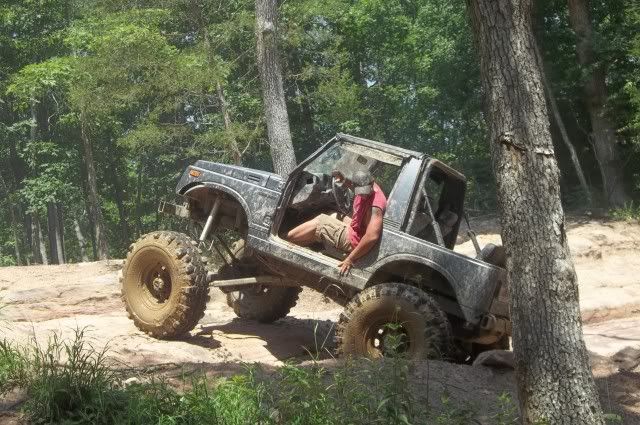Geometry. I'll share what I know/think I understand.
In a radius arm you have one point on the drivers side and one on the passenger side, where each link arm ties the axle into the frame (er... Unibody

) and the link arm travels in a fixed radius (hence the name) in relation to the body. It's basically zero resistance and no binding (within the limits of the coil spring travel). Which can be both a good and a bad thing.
When your tire is spinning and trying to grab traction it is trying to rotate the axle housing in the opposite direction. (Every action has an equal and opposite reaction, physics yo). Your radius arm does its job at keeping the housing from rotating and power is applied in a forward motion. However not all the power goes towards rotating the tires, because of the zero resistance and binding of travel in a radius arm, some of the power easily transfers as lifting the front of the jeeps body. (Think when you are at a red light and gun it, the weight transfers towards the back, and the rear sags and the front lifts.) in a radius arm, this is extremely noticeable because the geometry does not apply any anti-squat, or "the good part or link binding)
With a proper 4 link or the like, (with vertical separation, proper instant-centers and link lengths and all that jazz) you create some "good binding" as your axle housing tries to rotate again it is pushing on your upper link and actually pulling a bit on your lower link. With the right geometry this makes it so no power is applied in lifting your jeeps body.
It all makes sense to me I hope it may to you.
Same principles (but reversed) apply to anti-dive or the anti-squat of braking. Like when you see a newer ford (with a factory radius arm front suspension) slam on the brakes his front end dives down. This can be avoided with a multi-link setup.
Also applies to roll-axis when you bring in link triangulation. You can fight body roll and unloading with proper geometry.
Im out of time for a bit but there is a link calc in my signature.

